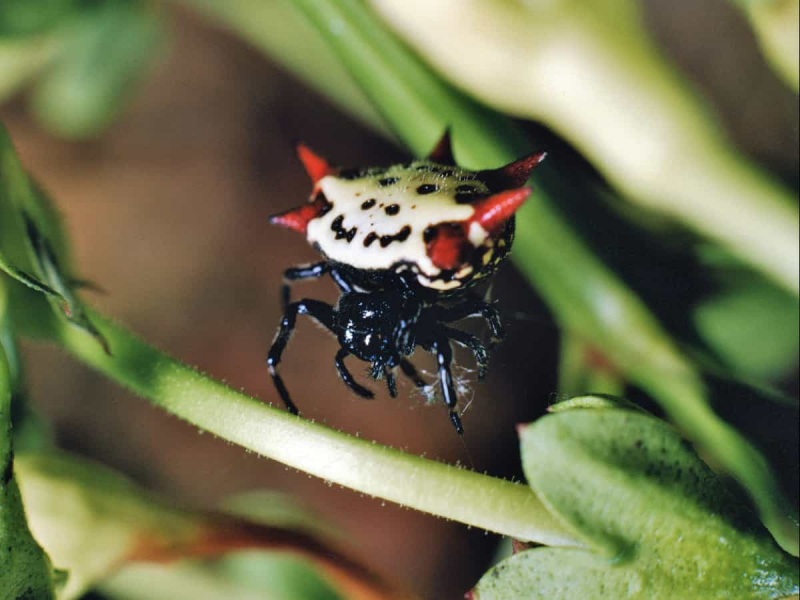Spiny-Backed Orb Weaver
The Spiny-Back Orb Weaver (Gasteracantha) is a member of the orb weaver family Araneidae. It is distributed worldwide in tropical and subtropical climates and can be found all across North and South America, as well as in some regions of Central Asia.
Male spiny-backed orb weavers are 2-3 millimeters long, compared to 5 to 9 millimeters for females. Additionally, only the females have the species' identifying six spines along the abdomen. Females with white upper abdomens typically have red or black spines, though there are other color variations. Males often have grey abdomens with white markings and many stubby projections in place of spines. Spiny-backed orb weavers like to build their webs in lightly wooded areas in regions with warm, wet climates. They prey on many garden pests, and their bite poses little threat to humans.
The unique and striking appearance of the Spiny-Back Orb Weaver extends beyond its physical characteristics. These spiders exhibit intriguing behaviors regarding web construction and hunting strategies. Unlike many other orb-weaving spiders that build large, vertical webs, the Spiny-Back Orb Weaver creates small, horizontal webs adorned with characteristic silk spines. These spines likely serve as protective structures, deterring predators or potential threats from approaching the spider while it rests at the center of its web. Furthermore, the spines may act as camouflage, helping the spider blend in with the surrounding vegetation and making it less conspicuous to passing insects.
Their hunting technique also involves an interesting tactic. When a potential prey item, such as an insect, becomes entangled in their web, the Spiny-Back Orb Weaver does not rush to capture it directly. Instead, it waits patiently and vibrates the silk threads of its web, causing the ensnared insect to become more trapped. This vibration not only reduces the chances of the prey escaping but also ensures that the web remains stable, preventing damage that could be caused by struggling prey.
Despite their relatively small size, these spiders play an essential ecological role by helping control the population of garden pests. While their bite poses little threat to humans, they are beneficial allies to gardeners, assisting in keeping insect populations in check in warm and humid regions worldwide.













